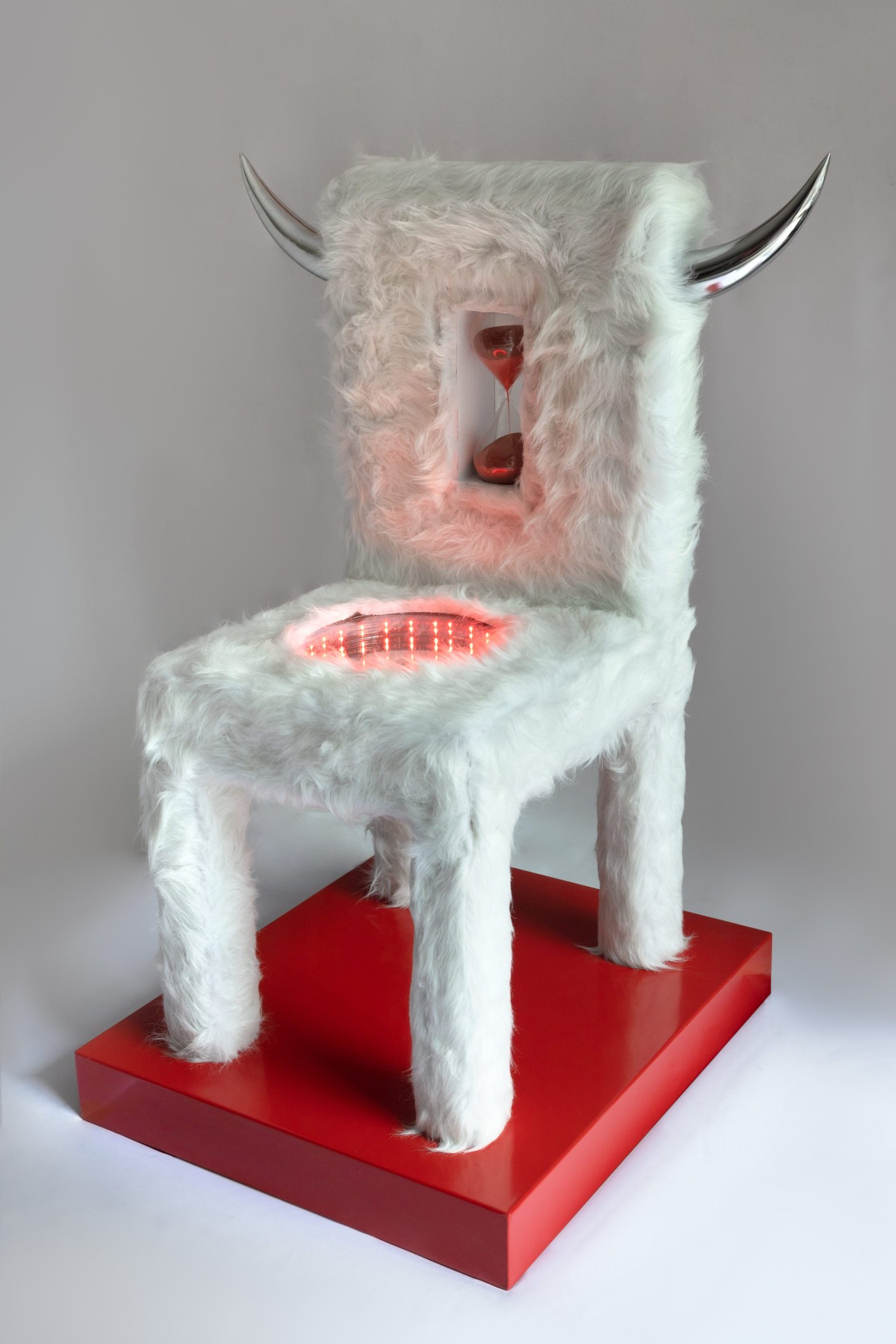July 15 – August 09, 2022
BREATHE
In Breathe collection, Amir Mousavizadeh focuses on the direct rethinking of power bases and their direct relationship with the community of humans. He describes the unstable, transient, and materialistic position/state and life of modern man at the heart of the society that he forms. But today, each of these relationships trap himself/man into what he thought and/or at least has installed a kind of dependency on the quality of his life.
In regard to sociology, we can reread works of this collection on the basis of reflection theory. This theory emphasizes that contemporary art is a product of the surrounding community context for the formation of viewpoint, approach and quiddity of the artist’s ultimate production. As we are witnessing in Breathe Collection works, elements of life space are placed next to each other in systematic and artificial relationships familiar with the modern human spirit. The horrible authority image of power seats, symbolic implicature relating to the concept of time, criticism of permanent power positions, machines of human spirit selling or -in a sense- representation of health exchange, representation of the modern human’s transactable life, etc. are the concepts used by the artist for introducing some quiddities of our surrounding community.
On the other hand, the placement form and relationship of these elements symbolize the fascinated state of the modern human life for the audience/himself. In this state, humans witness and face their own concocted items. This place-based manner concurrently makes each of us refer to ourselves as heir and heritage as if we harvest the things that we planted before. To sum up, this collection is like a visual breathe implying the breath of the artist in his surrounding society and space. In this limitless space, he and each of us played and will play a role (although a minor role) in the creation of their present form.
E=mc2
This collection is a combination of sculpture and photo-performance media and includes 13 works of the artist relating to the last two years. This collection’s works are a combination of figurative and minimal approaches and accompany each other through a thematic process due to a conceptual expression. Their materials are concretes, plexiglass, bricks, metal sheets, and photos. These works have been produced through a very precise method.
Attention to theoretical discussions and technological facilities in the scientific world is common among artists and ongoing artistic trends in the history of world art. Use of facilities and/or fundamental contrast to this area have led varied crucial works in different artistic media and genres during recent decades. And, a large number of crucial world works relating to new media/modern media have resulted from such approaches and interactions between humans and the world of technology. Similarly, the new collection of Amir is a creative reading of the world of science. By using the mass-energy equation formulized by Einstein in 1905, he has created visual works. Today, physics (or modern physics) seriously penetrates into a large number of contemporary theoretical discourses including philosophy and art and is a source of many revolutions concerning modern human thought and social realities in modern disciplines.
Albert Einstein’s equation is a symbol of mass-energy principle and shows that even a small amount of matter is full of energy and these two can become each other. The inherent metaphysical dimension of this equation is of a crucial theoretical aspect in the history of philosophy and science relating to cosmology and human cognition and is a kind of main components of discourses about rational analysis of nature among philosophers.
On the basis of this equation and its simplicity that is a clue of a more profound phenomenon of nature, the mass-energy principle is a general one and results from the space-time symmetry, showing transcendental rules. Einstein’s equation has a profound significance for the proper understanding of the true existence of the world.
Indeed, Amir selected this title in order to open a conceptual window for more interaction of the audience with his works.
By the schematic recreation of human life through the world of objects, he directs the audience’s attention to the fundamental concepts of human life during the process of life, death, and post-mortem world. By using fundamental concepts of physics such as time, mass, matter, light, color, and motion, he attempts to establish a tangible relationship with his audience’s mind and sense.
This relationship is heightened by conscious presence of minimalistic, naturalistic, and body-related clues such as footprint, naked body, feet, root and also raw clay that symbolizes the human body. Also, he sometimes utilizes these clues as a means for expression of ordinary social realities that are formed on the basis of super concepts of the present life quiddity under the shadow of this world’s interactions and on the basis of the fact that humans as a space-time product attend in what point of his historical-mythical nature.
Text by Saeed Khavar Nejad

